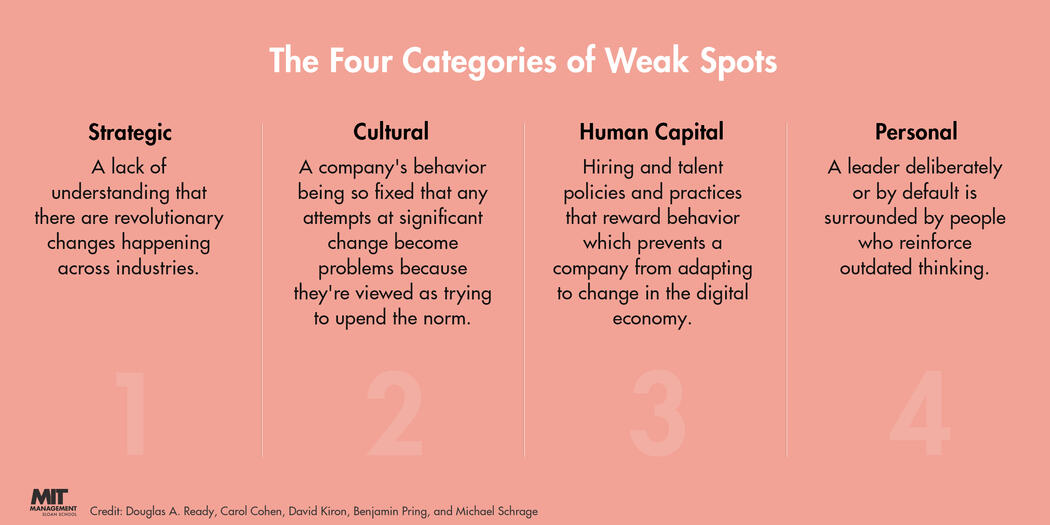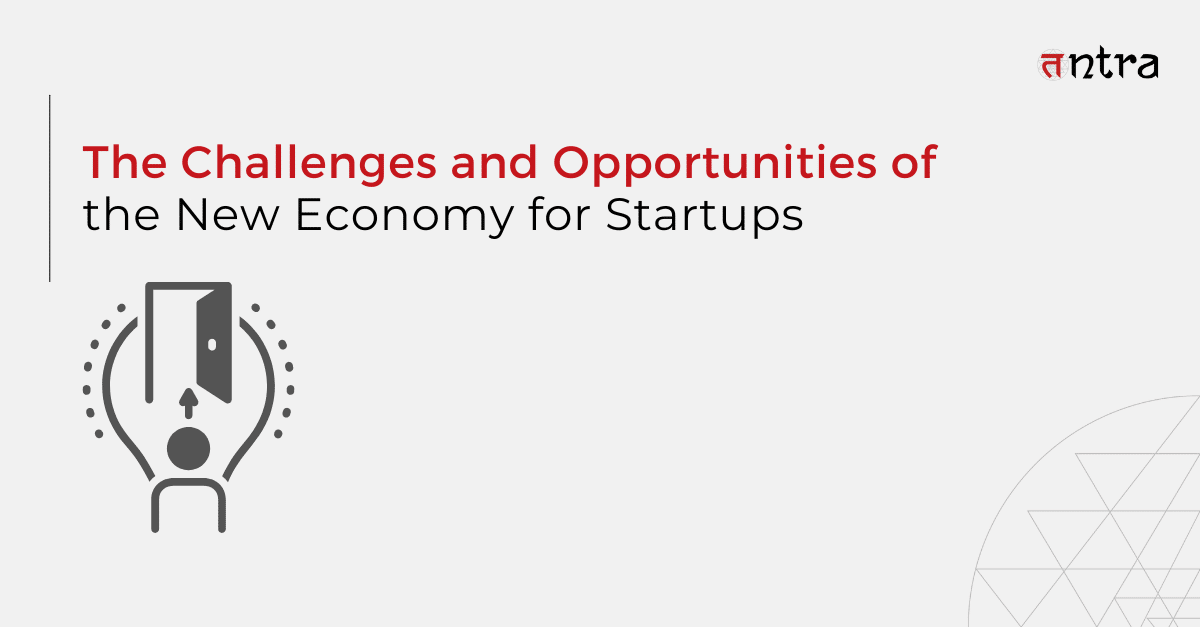
In an era characterized by rapid technological advancements, shifting global dynamics, and evolving consumer behaviors, the traditional economic landscape has undergone a profound transformation. This "new economy" is not merely a buzzword but a tangible reality, demanding a fundamental rethinking of business strategies and leadership approaches. For business leaders, understanding and effectively navigating this new terrain is paramount to ensuring sustained growth, competitiveness, and relevance.
This article serves as a practical guide, offering key insights and actionable strategies for leaders to thrive in this dynamic environment. We will delve into the defining characteristics of the new economy, explore the critical challenges and opportunities it presents, and highlight the essential leadership qualities and strategic imperatives required to succeed. From embracing digital transformation and fostering innovation to prioritizing agility and cultivating a purpose-driven culture, we will uncover how forward-thinking businesses are not just surviving but flourishing in this era of unprecedented change.
Understanding the New Economy: A Paradigm Shift
The concept of the "new economy" emerged in the late 1990s, primarily driven by the advent of the internet and increasingly powerful computing technologies. It signaled a departure from the industrial, manufacturing-centric models of the past towards an economy increasingly reliant on knowledge, information, and digital innovation. While the initial hype surrounding the dot-com bubble may have subsided, the underlying principles and transformative forces of this new economic paradigm have only intensified. [1]
Key Characteristics of the New Economy:
•Digitalization and Technology-Driven: At its core, the new economy is powered by digital technologies. This includes the widespread adoption of the internet, artificial intelligence (AI), machine learning, big data analytics, cloud computing, and the Internet of Things (IoT). These technologies are not just tools but fundamental enablers that reshape business processes, customer interactions, and market dynamics. [2]
•Knowledge and Information as Primary Assets: Unlike the old economy where physical assets and raw materials were paramount, the new economy values intangible assets such as knowledge, information, intellectual property, and data. The ability to generate, process, and leverage information effectively is a key differentiator and a source of competitive advantage. [3]
•Globalization and Interconnectedness: The new economy operates on a global scale, with businesses and markets deeply interconnected. Digital platforms facilitate cross-border trade, collaboration, and competition, making it essential for leaders to adopt a global mindset and understand diverse cultural and economic contexts. [4]
•Rapid Innovation and Disruption: The pace of innovation is unprecedented, leading to continuous disruption across industries. New business models, products, and services can emerge rapidly, challenging established players and creating new opportunities. This necessitates a culture of continuous learning, experimentation, and adaptability. [5]
•Customer-Centricity and Personalization: In the new economy, customers wield significant power. Access to information and a multitude of choices mean businesses must prioritize customer experience, personalization, and building strong relationships. Data analytics plays a crucial role in understanding customer needs and delivering tailored solutions. [6]
•Agility and Adaptability: Given the rapid pace of change and unpredictable market shifts, businesses in the new economy must be agile and adaptable. This involves flexible organizational structures, iterative development processes, and the ability to quickly pivot strategies in response to new information or market demands. [7]
•Rise of the Gig and Sharing Economies: The traditional employment model is evolving with the growth of the gig economy and sharing economy platforms. This shift impacts workforce management, talent acquisition, and the very definition of work, requiring leaders to rethink how they engage with and manage their human capital. [8]
•Emphasis on Sustainability and Social Responsibility: Increasingly, the new economy is characterized by a growing awareness of environmental and social impacts. Consumers, investors, and employees are demanding that businesses operate sustainably and contribute positively to society. This has led to the rise of ESG (Environmental, Social, and Governance) factors as critical considerations for business success. [9]
Understanding these fundamental characteristics is the first step for business leaders to effectively navigate the complexities and harness the opportunities presented by this transformative economic era. The next sections will delve into specific insights and strategies to thrive in this dynamic environment.
Key Insights for Business Leaders in the New Economy
Navigating the complexities of the new economy requires a proactive and adaptive leadership approach. Business leaders must not only understand the fundamental shifts occurring but also cultivate specific insights and strategies to steer their organizations towards sustained success. This section outlines critical insights that will empower leaders to thrive in this evolving landscape. [10]

1. Embrace Digital Transformation as a Continuous Journey
Digital transformation is not a one-time project but an ongoing, iterative process. Leaders must foster a culture that embraces technological adoption, from leveraging AI and machine learning for data-driven decision-making to implementing cloud-based solutions for enhanced agility. This involves investing in digital infrastructure, upskilling the workforce, and integrating technology across all business functions to streamline operations, improve customer experiences, and unlock new revenue streams. The goal is to build a digitally fluent organization capable of continuous adaptation. [11]
2. Prioritize Agility and Resilience
The new economy is characterized by volatility, uncertainty, complexity, and ambiguity (VUCA). Leaders must build agile organizations capable of rapid response to market shifts, technological disruptions, and unforeseen crises. This means fostering flexible organizational structures, empowering cross-functional teams, and adopting iterative development methodologies. Resilience, the ability to bounce back from setbacks, is equally crucial. This involves diversifying supply chains, building strong financial reserves, and cultivating a culture of continuous learning and adaptation. [12]
3. Cultivate a Data-Driven Decision-Making Culture
In an information-rich environment, data is the new oil. Business leaders must champion a data-driven culture where decisions are informed by insights derived from robust analytics, rather than intuition alone. This requires investing in data infrastructure, analytical tools, and data literacy programs for employees. Leveraging big data and AI can provide predictive insights into market trends, customer behavior, and operational efficiencies, enabling more informed and strategic choices. [13]
4. Foster a Culture of Innovation and Experimentation
The rapid pace of change in the new economy necessitates continuous innovation. Leaders must create an environment that encourages experimentation, risk-taking, and learning from failure. This involves allocating resources for research and development, fostering cross-collaboration, and establishing processes for identifying, testing, and scaling new ideas. Innovation should not be confined to R&D departments but should be ingrained in the organizational DNA, empowering employees at all levels to contribute to new solutions. [14]
5. Focus on Customer-Centricity and Personalized Experiences
In a highly competitive market, customer loyalty is earned through exceptional experiences. Leaders must prioritize understanding customer needs, preferences, and pain points through advanced analytics and direct feedback channels. The new economy demands personalized products, services, and interactions. Businesses that can deliver tailored experiences, anticipate customer needs, and build strong, lasting relationships will gain a significant competitive edge. [15]
6. Invest in Human Capital: Upskilling and Reskilling
The nature of work is evolving rapidly, with automation and AI transforming job roles. Business leaders must proactively invest in upskilling and reskilling their workforce to equip employees with the digital literacy, critical thinking, and problem-solving skills required for the new economy. This involves continuous learning programs, talent development initiatives, and fostering a growth mindset within the organization. Attracting and retaining top talent will be a key differentiator. [16]
7. Embrace Purpose-Driven Leadership and ESG Principles
Beyond profit, stakeholders in the new economy increasingly expect businesses to demonstrate a commitment to social and environmental responsibility. Leaders must embrace purpose-driven leadership, integrating ESG (Environmental, Social, and Governance) principles into their core business strategy. This involves transparent reporting on sustainability efforts, ethical supply chain management, diversity and inclusion initiatives, and contributing positively to communities. A strong commitment to purpose and ESG can enhance brand reputation, attract conscious consumers and investors, and foster employee loyalty. [17]
8. Build Strong Ecosystems and Partnerships
No single company can navigate the complexities of the new economy alone. Leaders must actively seek and cultivate strategic partnerships, collaborations, and ecosystem relationships. This includes working with technology providers, startups, academic institutions, and even competitors to co-create solutions, share knowledge, and access new markets. Building a robust network of partners can accelerate innovation, expand capabilities, and enhance market reach. [18]
By internalizing these key insights and translating them into actionable strategies, business leaders can not only mitigate the risks associated with the new economy but also unlock unprecedented opportunities for growth, innovation, and positive societal impact. The future belongs to those who are prepared to lead with foresight, agility, and a deep understanding of this transformative era.
Challenges and Opportunities in the New Economy
The new economy, while brimming with potential, also presents a unique set of challenges that business leaders must acknowledge and strategically address. Simultaneously, these challenges often conceal significant opportunities for those agile and innovative enough to seize them. [19]

Challenges:
•Intensified Competition: The digital landscape has lowered barriers to entry, leading to a surge in new competitors, including agile startups and global players. This heightened competition demands constant innovation and differentiation to maintain market share. Businesses must find unique value propositions to stand out in a crowded marketplace. [20]
•Rapid Technological Advancements: While technology is a driver of the new economy, its rapid evolution also poses a challenge. Businesses must continuously invest in new technologies, adapt their processes, and upskill their workforce to keep pace. Failure to do so can lead to obsolescence and a loss of competitive edge. [21]
•Data Security and Privacy Concerns: The increasing reliance on data comes with significant responsibilities. Businesses face growing threats from cyberattacks and must navigate complex regulatory frameworks like GDPR and CCPA. Protecting sensitive data and ensuring customer privacy are paramount to maintaining trust and avoiding severe penalties. [22]
•Talent Gap and Skill Shortages: The demand for specialized skills in areas like AI, data science, cybersecurity, and digital marketing often outstrips supply. This creates a talent gap, making it challenging for businesses to recruit and retain the skilled workforce needed to drive digital transformation and innovation. [23]
•Regulatory Complexity: The global and interconnected nature of the new economy means businesses operate under a patchwork of diverse and often evolving regulations. Navigating these complexities, especially across different jurisdictions, can be time-consuming and resource-intensive, diverting focus from core business activities. [24]
•Ethical Considerations of AI and Automation: As AI and automation become more prevalent, businesses must grapple with ethical dilemmas related to job displacement, algorithmic bias, and the responsible use of autonomous systems. Leaders need to establish clear ethical guidelines and ensure that technological advancements align with societal values. [25]
Opportunities:
•Global Market Access: Digital platforms and e-commerce have eliminated geographical barriers, enabling businesses to reach a global customer base with unprecedented ease. This opens up vast new markets and revenue streams for companies of all sizes. [26]
•Disruptive Innovation and New Business Models: The new economy fosters an environment ripe for disruptive innovation. Businesses can leverage emerging technologies to create entirely new products, services, and business models that challenge traditional industries and capture significant market share. [27]
•Enhanced Data-Driven Insights: The abundance of data, when properly analyzed, offers unparalleled opportunities for insights into customer behavior, market trends, and operational efficiencies. This allows for more precise targeting, personalized experiences, and optimized decision-making. [28]
•Increased Efficiency and Automation: Automation, powered by AI and robotics, can significantly enhance operational efficiency, reduce costs, and free up human capital for more strategic and creative tasks. This leads to improved productivity and resource optimization. [29]
•Personalized Customer Experiences: Leveraging data and AI, businesses can deliver highly personalized products, services, and marketing messages. This deepens customer engagement, builds loyalty, and creates a competitive advantage in a market where consumers expect tailored interactions. [30]
•New Talent Pools and Flexible Work Models: The rise of the gig economy and remote work opens up access to a global talent pool, allowing businesses to source specialized skills regardless of geographical location. Flexible work models can also enhance employee satisfaction and productivity. [31]
•Sustainable and Ethical Business Practices: Growing consumer and investor demand for sustainability presents an opportunity for businesses to integrate ESG principles into their operations. This not only enhances brand reputation but can also lead to cost savings through resource efficiency and attract a new generation of conscious consumers. [32]
By understanding and strategically responding to these challenges and opportunities, business leaders can position their organizations for success in the new economy, transforming potential obstacles into pathways for growth and innovation.
Examples of Successful Businesses Navigating the New Economy
Numerous companies, both established giants and agile startups, have successfully navigated the complexities of the new economy, demonstrating how strategic adaptation and innovation can lead to sustained growth and leadership. Their journeys offer valuable lessons for business leaders seeking to thrive in this dynamic environment. [33]
1. Apple: Continuous Innovation and Ecosystem Dominance
Apple consistently exemplifies adaptation in the new economy. Beyond its iconic hardware, Apple's success lies in its robust ecosystem of software, services (App Store, Apple Music, iCloud), and seamless user experience. Their continuous innovation in product design, coupled with a strong brand identity and customer loyalty, allows them to maintain a leading position despite intense competition. Apple's ability to anticipate and shape consumer trends, from personal computing to mobile devices and wearables, showcases a mastery of new economy dynamics. [34]
2. Microsoft: Cloud-First Transformation
Once primarily a software company, Microsoft has undergone a remarkable transformation, pivoting aggressively towards cloud computing with its Azure platform. This strategic shift, alongside its continued innovation in enterprise software, gaming (Xbox), and AI, has re-established Microsoft as a dominant force. Their success highlights the importance of recognizing fundamental shifts in technology and business models, and having the courage to reinvent core operations. [35]
3. Amazon: E-commerce, Cloud Services, and Logistics Mastery
Amazon's journey from an online bookstore to a global e-commerce and cloud computing behemoth is a testament to its relentless pursuit of customer-centricity and operational efficiency. Beyond its vast retail empire, Amazon Web Services (AWS) revolutionized cloud infrastructure, becoming a cornerstone of the digital economy. Their continuous investment in logistics, AI-driven personalization, and new ventures like healthcare and groceries demonstrates a proactive approach to market expansion and disruption. [36]
4. Netflix: Disrupting Entertainment with Data and Personalization
Netflix transformed the entertainment industry by leveraging data analytics and personalization to deliver on-demand streaming content. Their early recognition of changing consumer habits, coupled with significant investments in original content and a global expansion strategy, allowed them to disrupt traditional media giants. Netflix's model underscores the power of understanding consumer preferences and delivering highly tailored experiences. [37]
5. Tesla: Sustainable Innovation and Ecosystem Integration
Tesla has not only revolutionized the automotive industry with electric vehicles but has also built an integrated ecosystem around sustainable energy solutions (solar, battery storage). Their direct-to-consumer sales model, over-the-air software updates, and focus on autonomous driving technology showcase a forward-thinking approach that challenges established norms. Tesla's success is a blend of technological innovation, a strong brand narrative, and a commitment to a sustainable future. [38]
These examples illustrate that success in the new economy is not confined to a single industry or business model. It is a result of a combination of factors: embracing digital transformation, prioritizing innovation, understanding and responding to customer needs, building resilient operations, and often, having the foresight to disrupt existing markets or create entirely new ones. Business leaders can draw inspiration from these companies to forge their own paths in the evolving economic landscape.
Conclusion: Leading with Vision in the New Economy
The new economy is not a fleeting trend but a fundamental reshaping of how businesses operate, create value, and interact with the world. It is a landscape defined by constant change, technological acceleration, and an increasing demand for purpose-driven leadership. For business leaders, navigating this terrain successfully requires more than just adapting to new technologies; it demands a profound shift in mindset, strategy, and organizational culture.
To thrive in this environment, leaders must embrace a continuous journey of digital transformation, fostering agility and resilience within their organizations. They must cultivate a data-driven decision-making culture, empowering teams with insights to make informed choices. Innovation and experimentation should be at the heart of every operation, encouraging a willingness to take calculated risks and learn from failures. Above all, a relentless focus on customer-centricity and personalized experiences will be paramount in building lasting relationships and competitive advantage.
Furthermore, investing in human capital through continuous upskilling and reskilling is crucial to ensure the workforce remains equipped for the evolving demands of the new economy. Leaders must also champion purpose-driven approaches, integrating ESG principles into their core strategies to meet the growing expectations of stakeholders for social and environmental responsibility. Finally, building strong ecosystems and strategic partnerships will be essential, as collaboration and shared knowledge become key drivers of innovation and market expansion.
The insights and strategies outlined in this guide are not exhaustive, but they provide a robust framework for business leaders to navigate the complexities and seize the immense opportunities presented by the new economy. By leading with vision, adaptability, and a commitment to continuous evolution, businesses can not only survive but flourish, shaping a future that is both prosperous and sustainable.


.png)

0 Comments